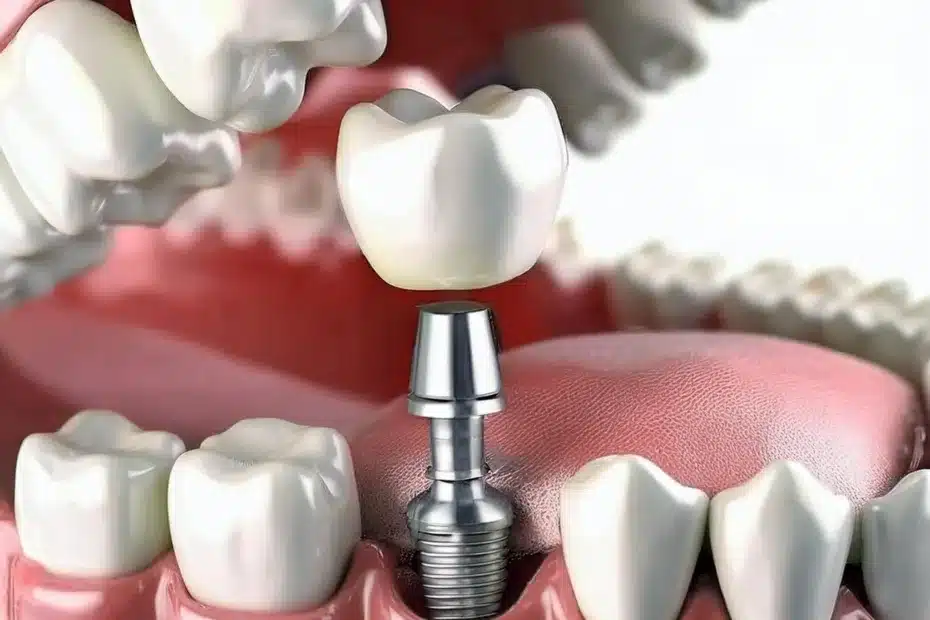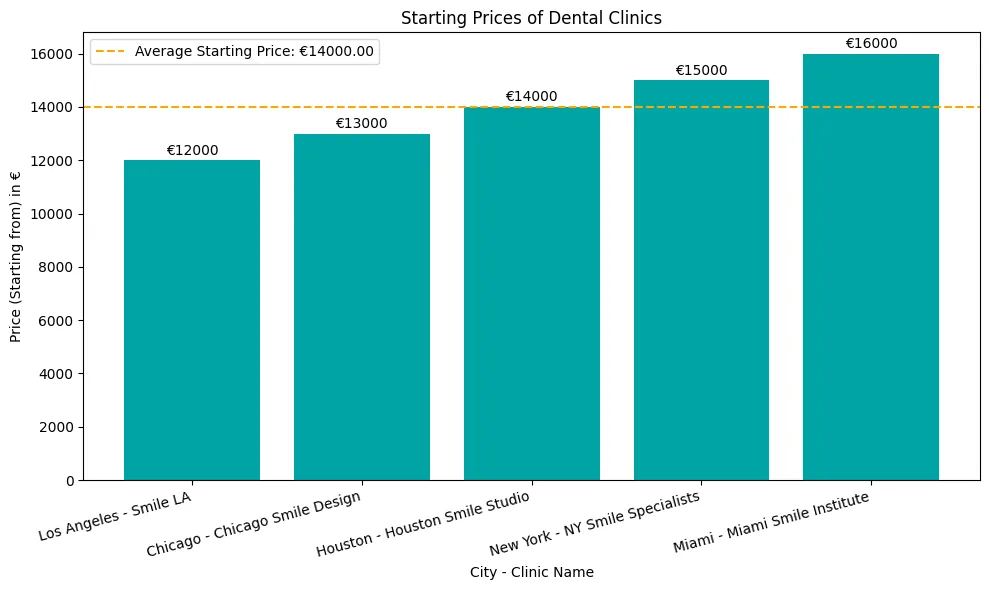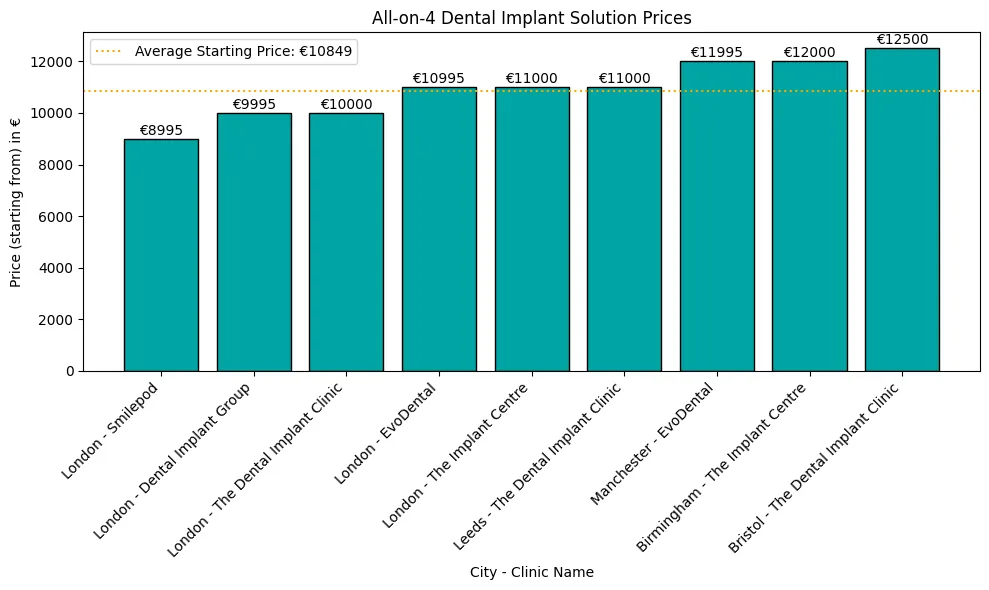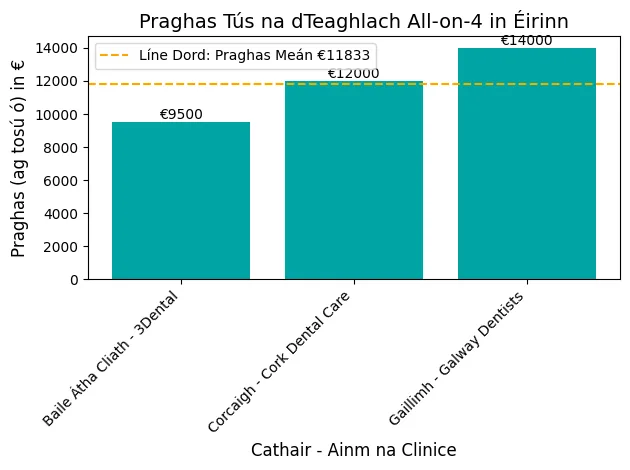Titanium dental implants have become a popular choice for missing teeth, but many people still have concerns about safety, durability, and cost.
If you are considering titanium implants, you are probably wondering what they are made of, how long they last, and if they are worth the investment.
What are the pros and cons of titanium implants?
Titanium dental implants material are a popular choice for missing teeth, with a 92.5% success rate after 8 years. Made from biocompatible titanium, they are durable and corrosion-resistant with a low risk of allergic reactions.On average, a titanium dental implant costs between €500 and €2,000 per implant, depending on the complexity of the procedure.

What are titanium implants made of?
A titanium implant is made of a biocompatible metal alloy that is strong, durable, and corrosion-resistant (1).
The titanium alloy used in implants is typically 90% titanium, 6% aluminum, and 4% vanadium (2).
This alloy is chosen for its high strength-to-weight ratio, corrosion resistance, and ability to withstand the stresses of chewing and biting.
Biocompatibility of Titanium Implants
The biocompatibility of titanium dental implants is one of their biggest advantages.
Titanium is a non-toxic metal that is well tolerated by the body and has been shown to promote bone growth and integration (3).
The surface of the titanium dental implant is also treated to enhance its biocompatibility and promote osseointegration, the process by which the implant fuses with the surrounding bone.

Corrosion Resistance of Titanium Implants
Titanium dental implant materials are also corrosion-resistant, which is vital for their long-term success.
The titanium alloy used in implants is corrosion-resistant to saliva, food and other substances that can damage the implant (4).
This corrosion resistance ensures the implant remains strong and stable over time and reduces the risk of implant failure.
| Time Period | Success Rate | Reference |
|---|---|---|
| 5 years | 92.5% | Reference 5 |
| 8 years | 92.5% | Reference 5 |
| 10 years | 90% | Reference 3 |
| 15 years | 90% | Reference 3 |
Pros of Titanium Implants
Titanium dental implants have several advantages that make them a popular choice for missing teeth. Some of the benefits are:
High Success Rate
Titanium dental implants have a high success rate, with a cumulative survival rate of 92.5% after 8 years (5).
This is due to the biocompatibility of titanium, which allows it to integrate well with the surrounding bone and tissue.
Biocompatibility
Titanium is a biocompatible metal that is well tolerated by the body (2).
This means it is less likely to cause allergic reactions or other adverse effects and is a safe choice for implants.
Durability
Titanium dental implants are also durable and can last for many years with proper care (4).
One study found that titanium implants had a survival rate of 90% after 15 years (3).

Cons of Titanium Implants
While titanium dental implants have many advantages, they also have some disadvantages.
Some of the downsides of titanium dental implants are:
Allergic Reactions
Some people may be allergic to titanium, which can cause an allergic reaction when the implant is placed (6).
This can cause symptoms such as hives, eczema, edema, and facial inflammation (7).
In severe cases, the allergic reaction can cause the implant to fail.
Aesthetics
Titanium dental implants can be visible under the gum tissue, which can affect the smile (6).
This can be a concern for those who are self-conscious about their appearance.
Cost
Titanium dental implants can be expensive, with prices ranging from €500 to €2,000 per implant (1).
This can be a big financial burden for some.
| Country | Cost |
|---|---|
| United States | €1,000 – €2,000 |
| United Kingdom | €800 – €1,500 |
| Albania | €500 – €1,000 |
Compared to Other Materials
When it comes to choosing a material for implants, titanium is not the only option.
Other materials, such as ceramic and zirconia, are also available.
Titanium vs Ceramic dental Implants
Ceramic implants are made of a type of ceramic material that mimics the natural tooth.
While ceramic implants have a more natural appearance, they are not as strong as titanium implants (6).
In fact, one study found that ceramic implants had a lower survival rate than titanium implants, with a 5-year survival rate of 73.2% compared to 92.5% for titanium implants (5).

Titanium vs Zirconia dental Implants
Zirconia implants are made of a type of ceramic material that is known for its strength and durability.
While zirconia implants are stronger than ceramic implants, they are still not as strong as titanium implants (4).
In fact, one study found that zirconia implants had a 5-year survival rate of 85.7%, which is lower than 92.5% for titanium implants (5).
Titanium vs Other Metals
Titanium is not the only metal used in implants.
Other metals such as vanadium, aluminum, cobalt, chromium and molybdenum are also used (1).
But titanium dental implant are the most commonly used metal because of its biocompatibility, strength and resistance to corrosion.

Conclusion & Key Takeaways:
Key-Takeaways
Titanium dental implants have a 92.5% success rate after 8 years (5).
A titanium dental implant is biocompatible, reduces the risk of allergic reactions, and promotes osseointegration (2).
Titanium dental implants are durable and a long-lasting solution for missing teeth (4).
Conclusion:
Titanium dental implants are a popular choice for missing teeth because of their high success rate, biocompatibility, and durability.
While they have some downsides, like allergic reactions and aesthetic concerns, they are a viable option for many.

FAQ
References
(1) Esposito M, et al. Interventions for replacing missing teeth: different types of dental implants. Cochrane Database Syst Rev. 2014;(7):CD003815.
Article: Interventions for replacing missing teeth: different types of dental implants
(2) Albrektsson T, et al. Osseointegrated titanium fixtures in the treatment of dentulousness. Biomaterials. 1983;4(1):25-28.
Article: Osseointegrated titanium fixtures in the treatment of dentulousness
(3) Adell R, et al. A 15-year study of osseointegrated implants in the treatment of the edentulous jaw. Int J Oral Surg. 1981;10(6):387-416.
Article: A 15-year study of osseointegrated implants in the treatment of the edentulous jaw
(4) Esposito M, et al. Dental implants: a review. J Clin Periodontol. 2016;43(3):267-278.
Article: Dental implants: a review
(5) Buser D, et al. Long-term evaluation of non-submerged ITI implants. Part 1: 8-year life table analysis of a prospective multi-center study with 2359 implants. Clin Oral Implants Res. 1997;8(3):161-172.
(6) Lindhe J, et al. The effect of implant design on the healing of the peri-implant tissues. J Clin Periodontol. 2017;44(3):257-265.
Article: The effect of implant design on the healing of the peri-implant tissues
(7) Donos N, et al., The role of dental implants in the management of periodontal patients. Periodontol 2000. 2017;73(1):133-144.
Article: The role of dental implants in the management of periodontal patients




